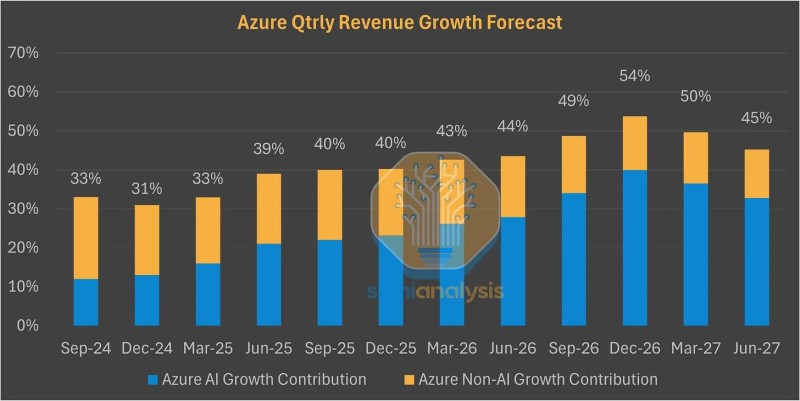⬤ Recent forecasts predict Azure will see significant acceleration, climbing from roughly 40% year-over-year growth to a 54% exit rate by the end of 2026. AI demand is reshaping Microsoft's cloud business, with rapid expansion across training infrastructure, inference workloads, and enterprise AI adoption. This represents a fundamental shift in how Azure captures market share and generates revenue.

⬤ The growth outlook comes with notable risks tied to evolving tax policies. Governments worldwide are considering new levies on energy-intensive data centers, carbon taxes, and changes to hardware depreciation rules. These could squeeze margins, slow infrastructure buildouts, and push talent toward more favorable regulatory environments. Smaller cloud providers might struggle to survive under increased tax pressure, while hyperscalers like Microsoft continue expanding. These fiscal uncertainties add complexity to Azure's growth story.
⬤ The projected acceleration reflects a multi-year AI expansion cycle. Growth is expected to climb from the low-30% range in late 2024 to around 40% by the end of 2025, then push higher to 43-44% in early 2026 before peaking at 54% in December 2026. The trajectory shows AI contributions becoming the primary driver of Azure's performance, gradually overtaking traditional cloud services.
⬤ This forecast highlights both the promise and vulnerability of the current AI wave. Azure stands to benefit enormously from enterprise AI spending, but sustained momentum depends on more than just technology. With capital requirements rising and regulators examining hyperscale operations more closely, policy decisions may prove just as critical as product execution in determining whether Azure hits these ambitious targets.
 Usman Salis
Usman Salis

 Usman Salis
Usman Salis


